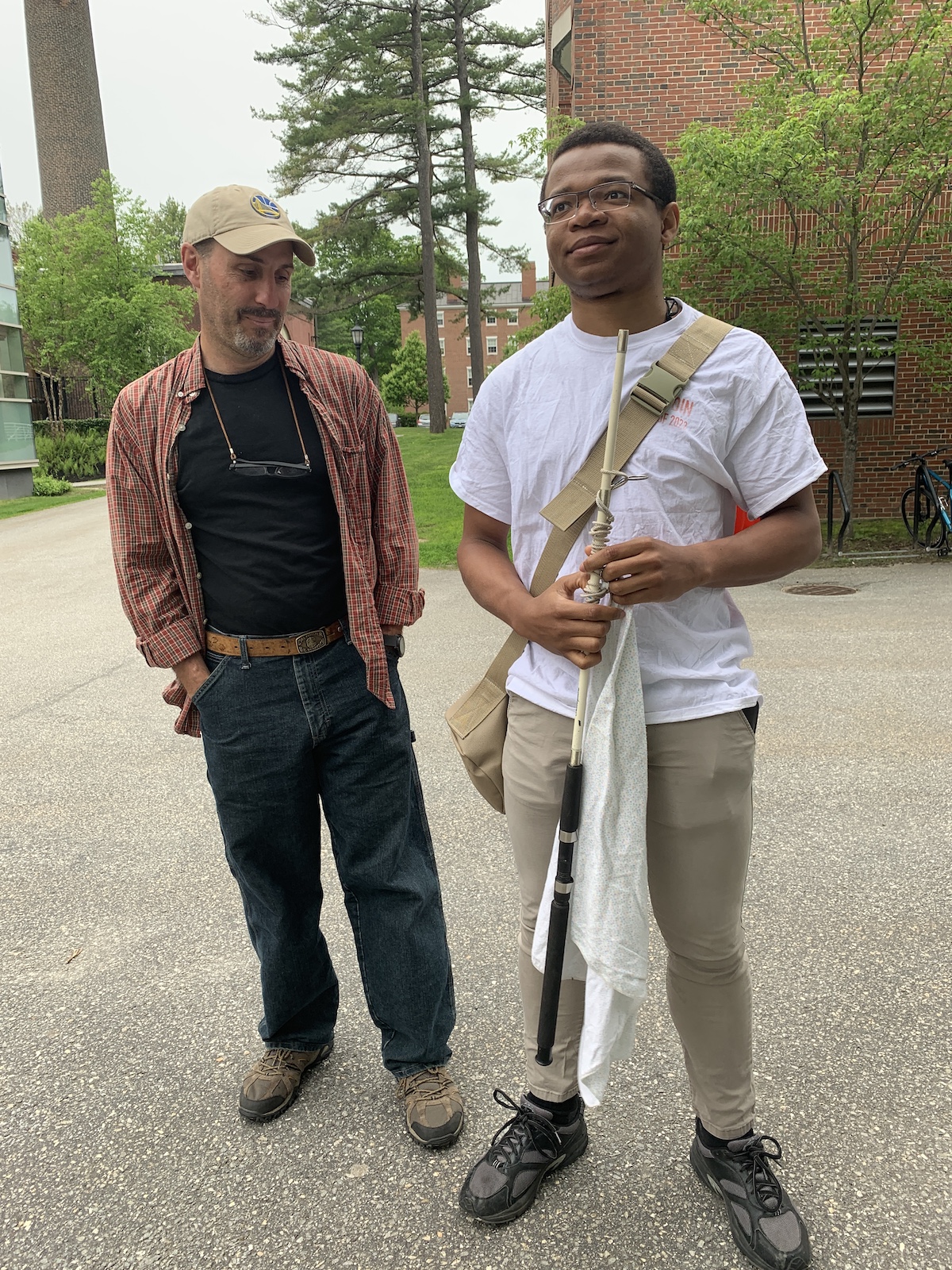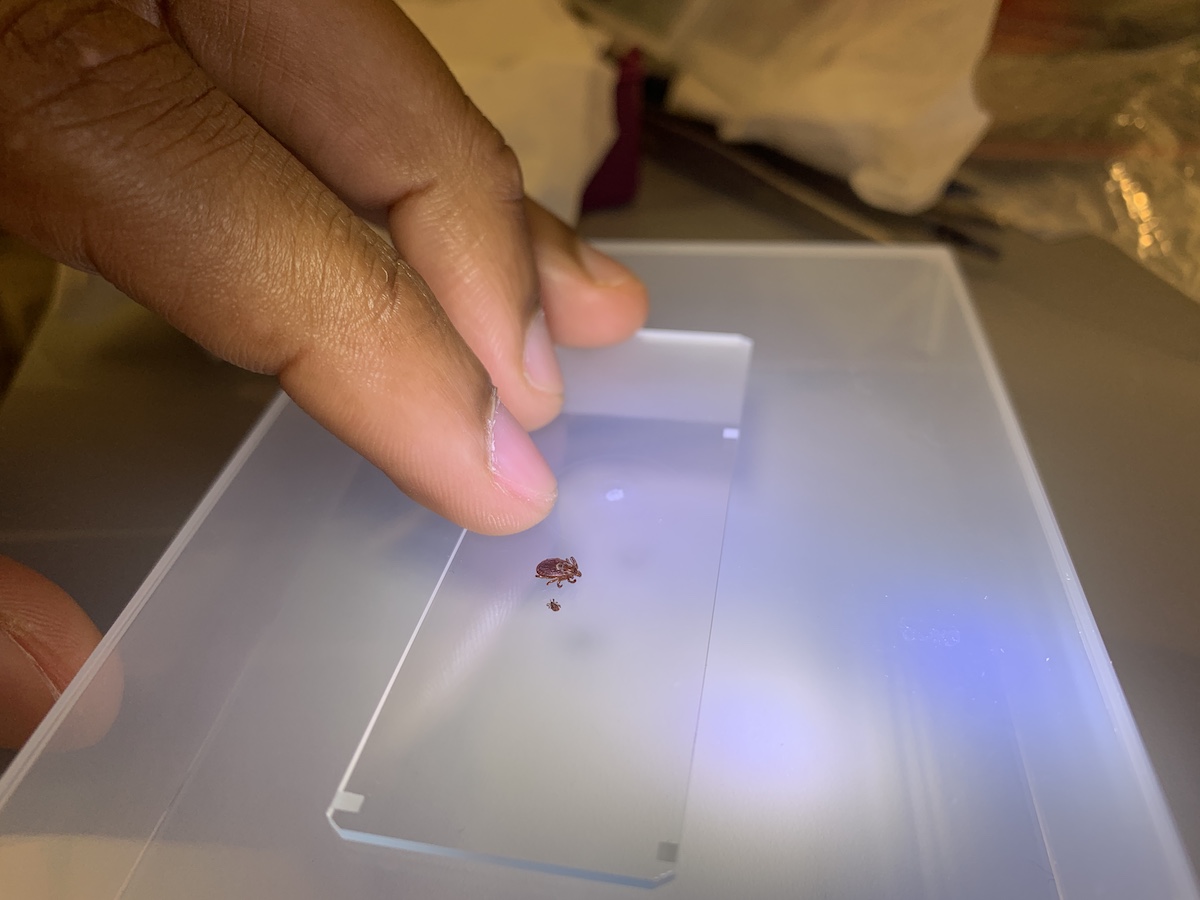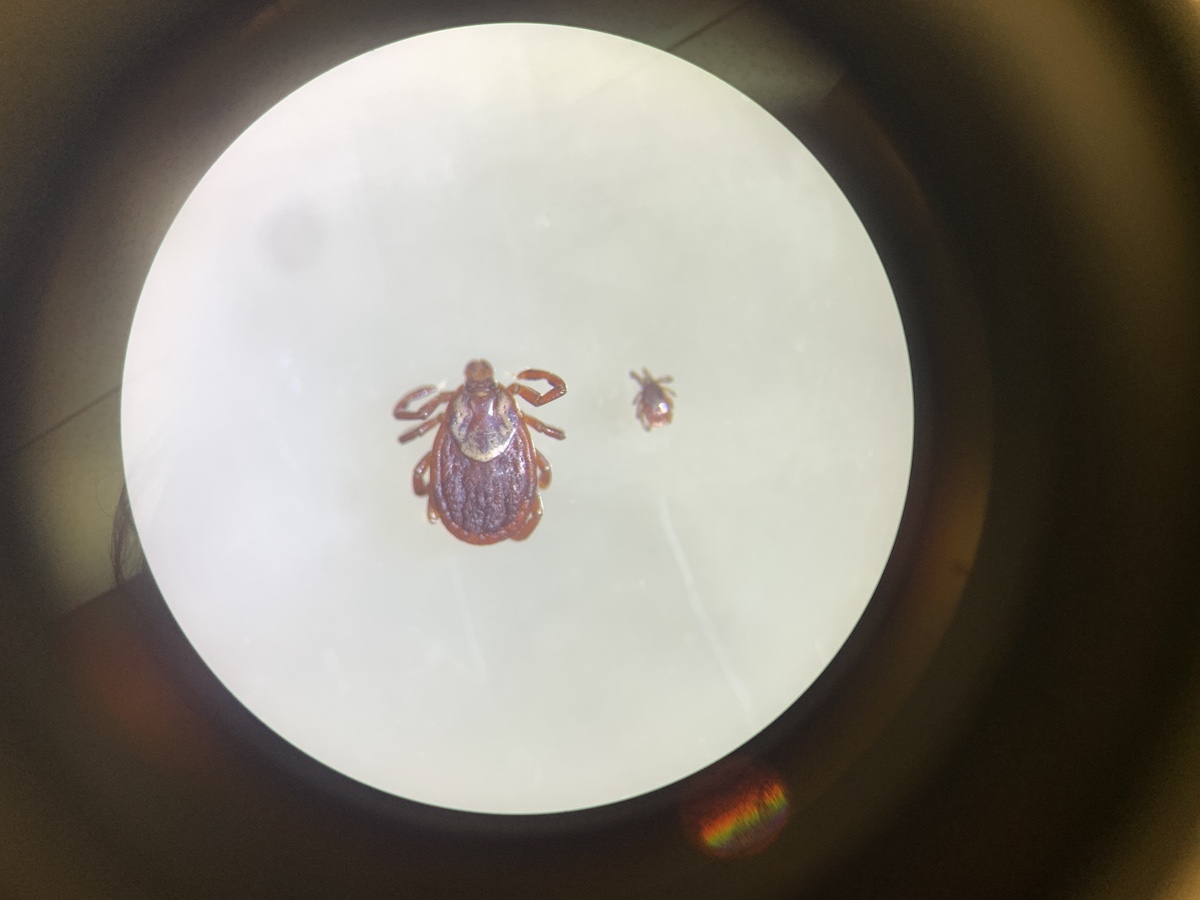Ecology Professor and Student Launch a Long-Term Study on Ticks
By Rebecca Goldfine
When they first headed out into meadows and woods to collect ticks earlier this summer, Onuorah and his advisor, Associate Professor of Biology Vlad Douhovnikoff, came back tick-covered but essentially empty-handed.
Though they were regularly dragging white flags through high grass and brush, they were attracting a lot of attention from the wrong target: dog ticks. But no deer ticks—which are tiny compared to dog ticks.
The two researchers are more interested in deer ticks because they carry three diseases that afflict humans: Lyme, babesiosis, and anaplasmosis. They want to discover when deer ticks are most common and in what habitats throughout the spring, summer, and fall. And they'll investigate what proportion of deer ticks carry the diseases that can make people very ill.
After a couple of weeks of trial and error, they came up with a sure-fire way to catch the insect, which can be as small as a poppy seed. They place a block of dry ice (which is frozen carbon dioxide) in a small cooler in the middle of a 1.5"x1.5" plywood plank. Four straws stick out through small perforations in the cooler's bottom four corners. As the dry ice block melts, carbon dioxide seeps through the straws and onto the board, which is covered with two-sided tape.
The contraptions work because ticks, like mosquitoes, are attracted to the carbon dioxide mammals release. When they crawl onto the tape, they get stuck. In just a matter of hours, they'll catch dozens of ticks.
Once the ticks are back in the lab, Onuorah inspects them under the microscope to determine their life stage and sex. Then he crushes them to run a DNA analysis to discover what diseases, if any, they carry.
This summer is the first phase in a multiyear project. In the coming years, Douhovnikoff and his student assistants will gather increasingly granular data on where and when ticks are most likely to be found, their life cycle, and the prevalence of the diseases they carry.
"We're starting with a coarse approach, and if we get ticks in some environments, we'll zero in on what differentiates the environments," Douhovnikoff said. "Now that we have these traps, we can design a sampling structure to statistically analyze the incidence of ticks in different ecotypes at different times of the year."
They're beginning by placing their traps in three ecosystems: grassland (in the former Navy base), pine woodlands, and mixed-pine/deciduous woodlands.
In the future, they'll begin to take a closer look at these sites' microclimate variables and other differentiating details, such as the amount of sunlight a place receives, or whether a stream or pond is nearby.
"We're at the beginning, at the highest level, we haven't magnified yet. We'll magnify as we go," Douhovnikoff said. He suspects that they'll find a lot of ticks at the edges of ecosystems, between forests and fields. "A lot of animals like edges, and that might be reflected in tick populations."
They've already noticed that, on humid days or after it rains, deer ticks are more active. Ticks are very susceptible to arid conditions and prefer moist areas.
Onuorah will continue to catch, count, and analyze ticks through the fall. As a pre-med student, he is interested in the public health implications of this ecological research.
An important goal of his and Douhovnikoff's research is to shed light on tick behavior to help people avoid ticks. "People have to be careful, and be aware of the risky periods," Douhovnikoff said. "There is not a lot of detail out there on that yet."





